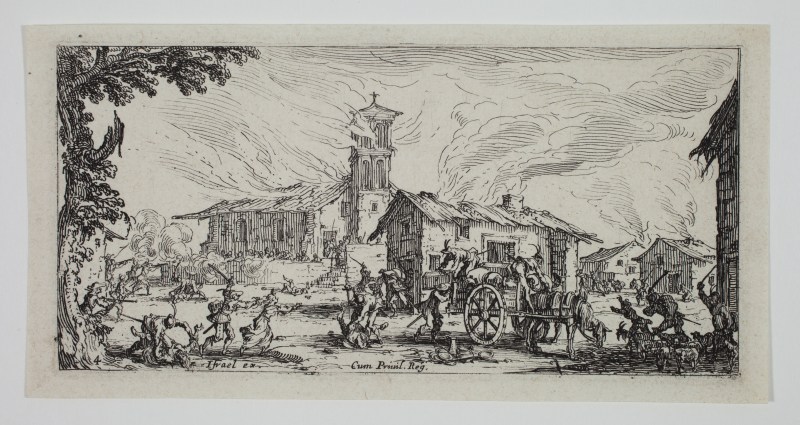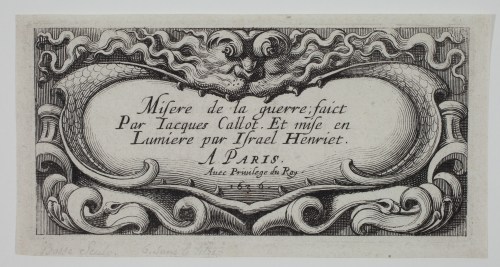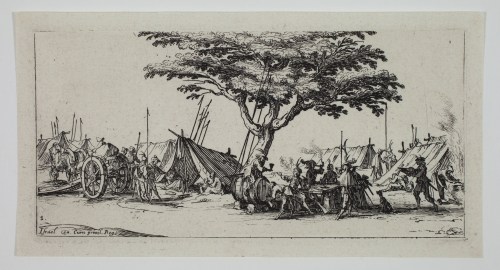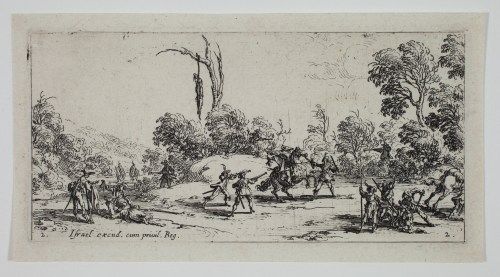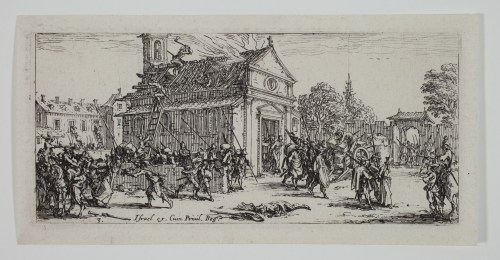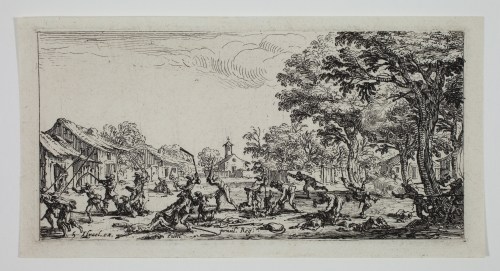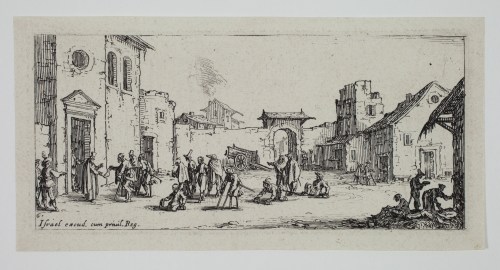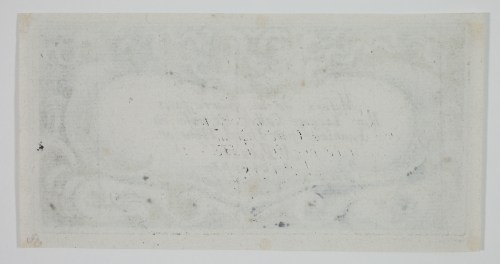Jacques CALLOT: Misère de la guerre - ca. 1632
Price: 2200 €
Etching, 58 x 119 mm (title plate), 52 à 56 x 115 mm (plates). Lieure 1333-1338, 2nd state (of 2); Meaume 557-563.
Complete series of one title plate and six plates. Impression of the title is of the only state, impressions of the other plates are of the 2nd state (of 2) with Israël Henriet’s privilege and the numbers (impressions of the 1st state are extremely rare).
Very fine impressions printed on laid paper. In perfect, fresh condition. Small margins.
The full collection of the Petites Misères de la Guerre contains the 6 etchings by Jacques Callot, with a title page etching by Abraham Bosse. The title is as described by Meaume under number 557 for Callot's works, with the engraved inscription: Misere de la guerre ; faict / Par Iacques Callot. Et mise en / Lumiere par Israel Henriet. / A PARIS. / Avec Privilege du Roy. / 1636.
The titles for the six etchings by Callot were chosen by Meaume and Lieure: Le Campement, L’Attaque sur la route ou Vol sur les grands chemins, Dévastation d’un monastère, Pillage et incendie d’un village, La Revanche des paysans, L’Hôpital. [The Camp, Attack on Route, also called Theft on the Great Road, Devastation of a Monastery, Looting and Burning of a Village, The Revenge of the Peasants, The Hospital.]
According to Lieure, the Petites Misères de la Guerre were not printed in Callot's lifetime: he allegedly never finished this series, but expanded on the same theme in the Grandes Misères de la Guerre (Lieure 1339-1356), of which five plates take up the same subjects (Le Campement is the only one that is not in the second series). Israël Henriet bought the six copper plates for the Petites Misères and published them with a frontispiece engraved by Abraham Bosse.
« The six plates evoke different aspects of the life of soldiers, the encampment, raids and looting, the iconoclastic rage against Church possessions, peasants taking revenge for the exactions of the troops, the miserable end awaiting soldiers in hospital. These compositions no doubt herald the mastery on display in the Grandes Misères, but their thematic structure is still somewhat hesitant. The turn towards political reflexion, so tangible but often missed, and will become a feature of the Grandes Misères, is yet absent: the Distribution of Rewards is missing, as are the heraldic details that will make this famous series a part of the historical ensemble, both timeless and still strikingly current, that of the ‘Two Hundred Years War’. […] » (Paulette Choné, p. 400, our translation).
The two series of etchings, the Petites and the Grandes Misères de la guerre, are Jacques Callot’s most famous works.
References: Paulette Choné: « Les misères de la guerre, ou « la vie du soldat » : la force et le droit », in Jacques Callot, exhibition catalogue, Musée historique lorrain, Nancy, 13 June - 14 September 1992; Marie Richard: Jacques Callot, Une œuvre en son temps, Les Misères et les Mal-heurs de la guerre, 1633, Nantes, 1992; James Clifton and Leslie M. Scatone: The plains of Mars: European war prints, 1500-1825, from the collection of the Sarah Campbell Blaffer Foundation, 2009.



